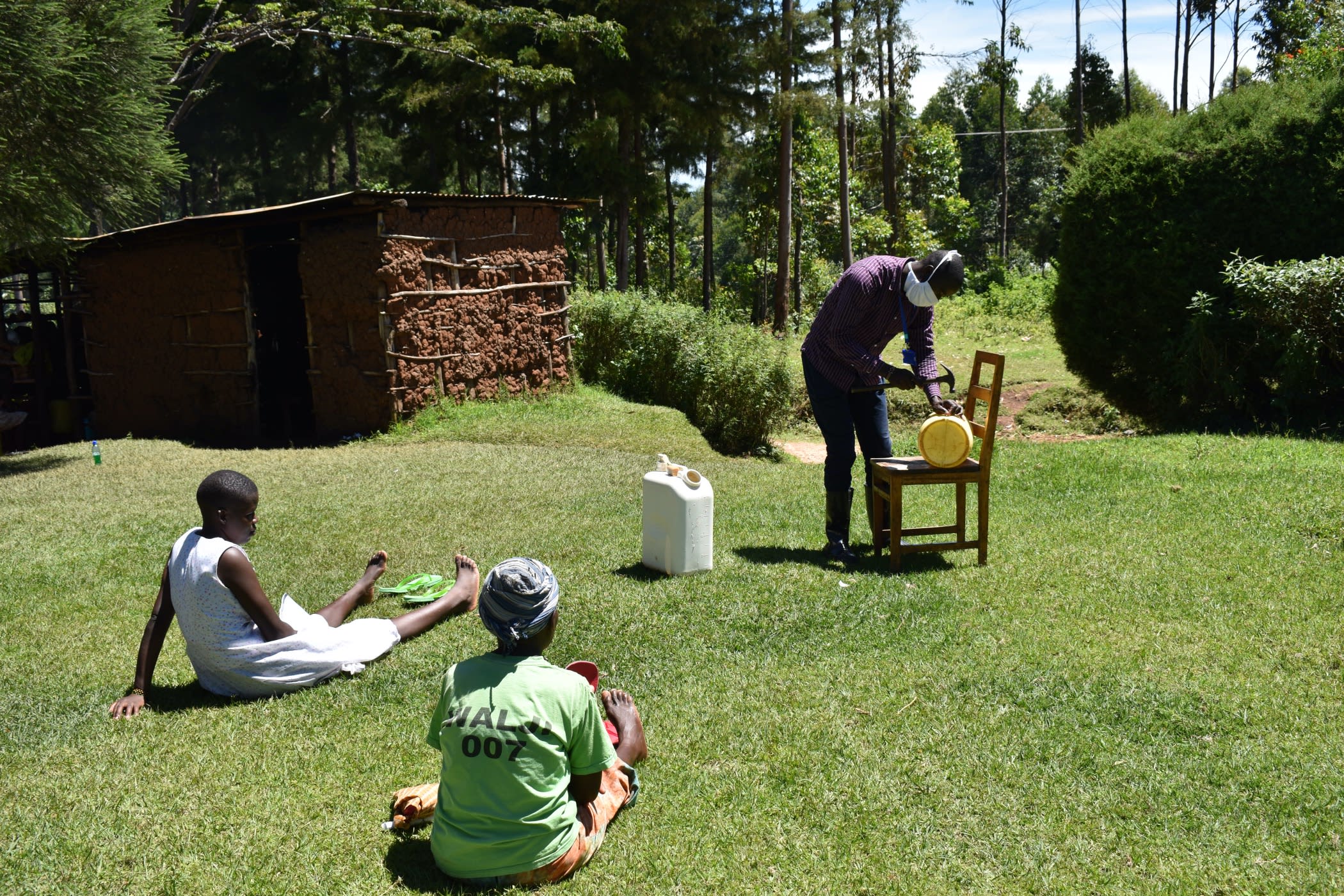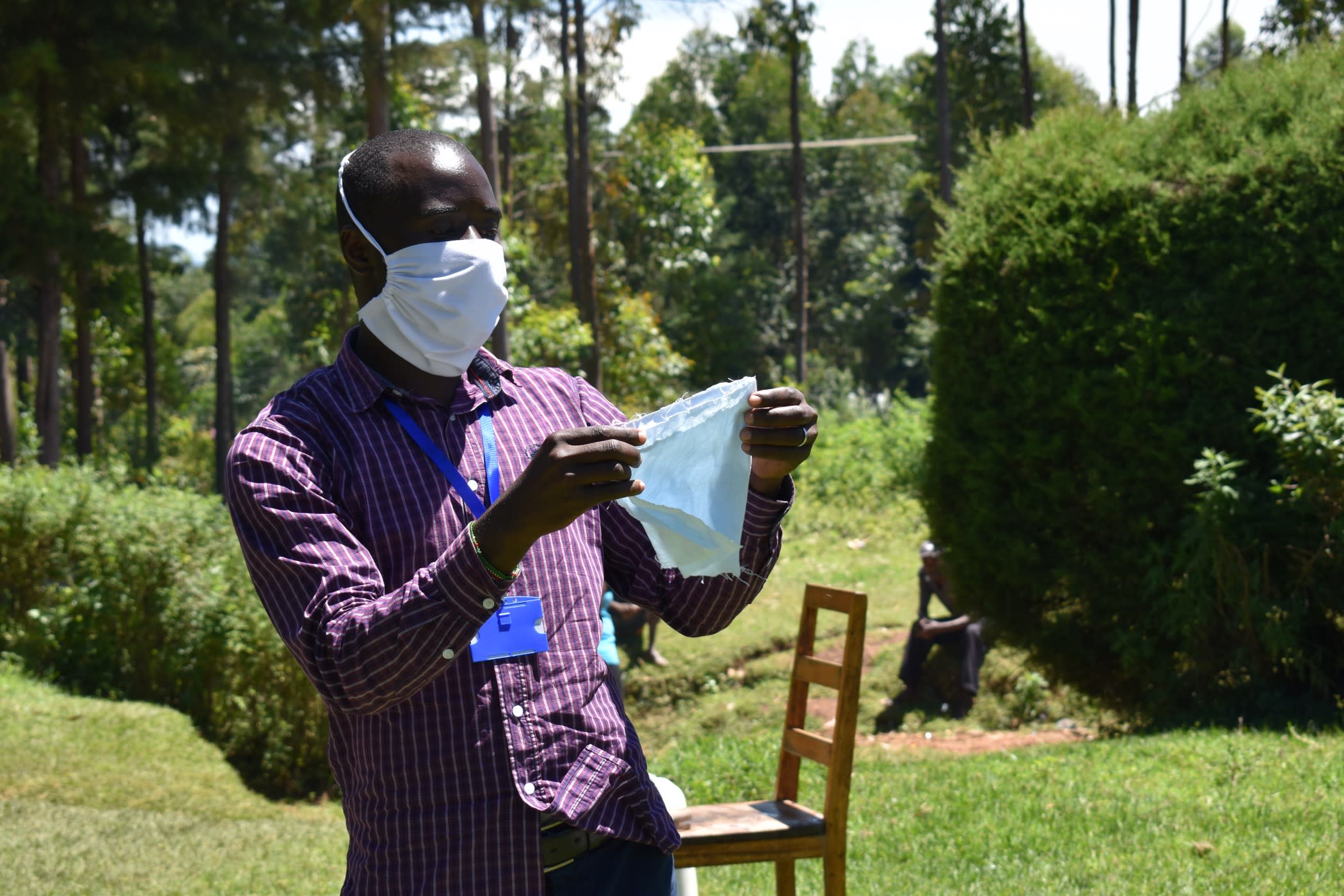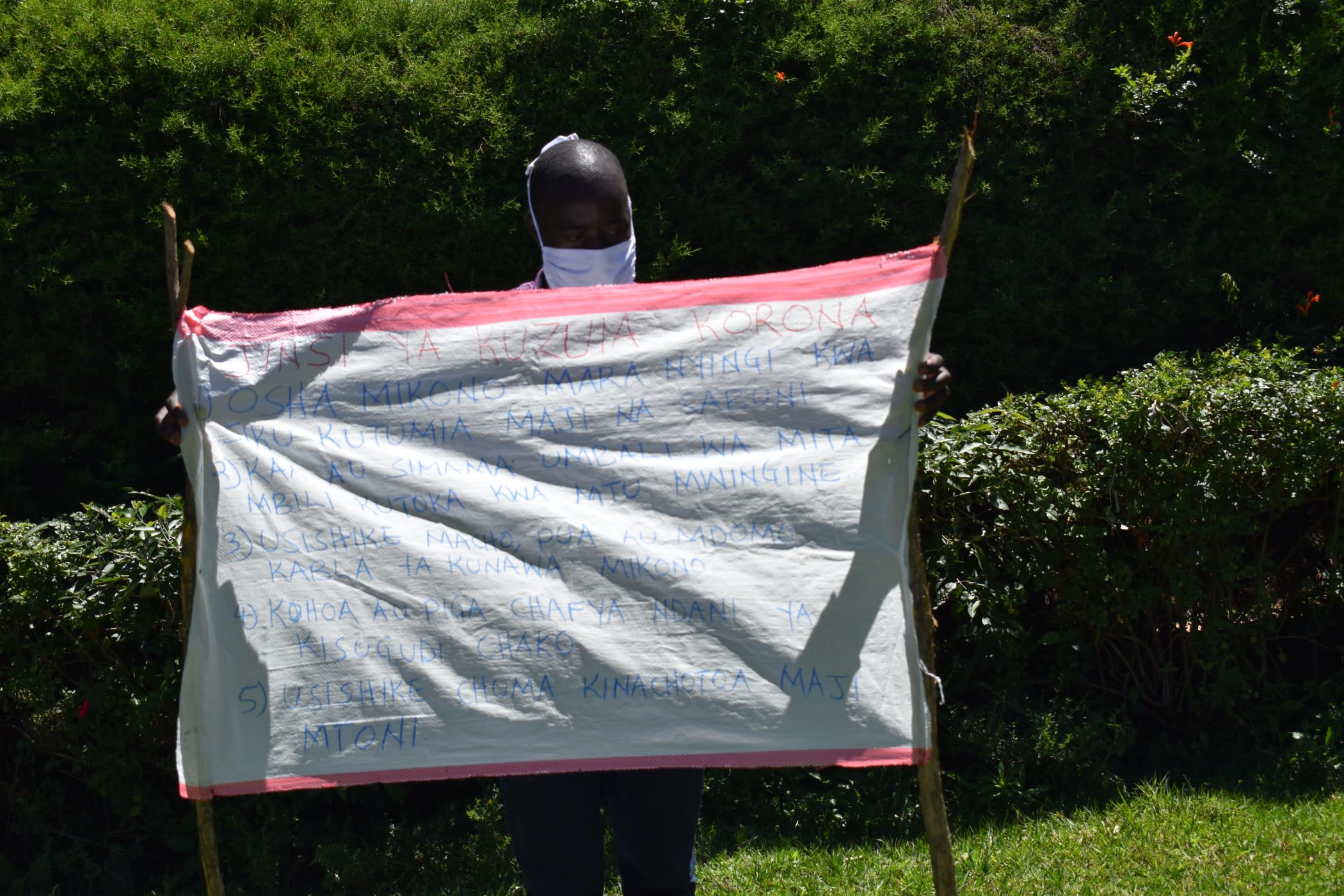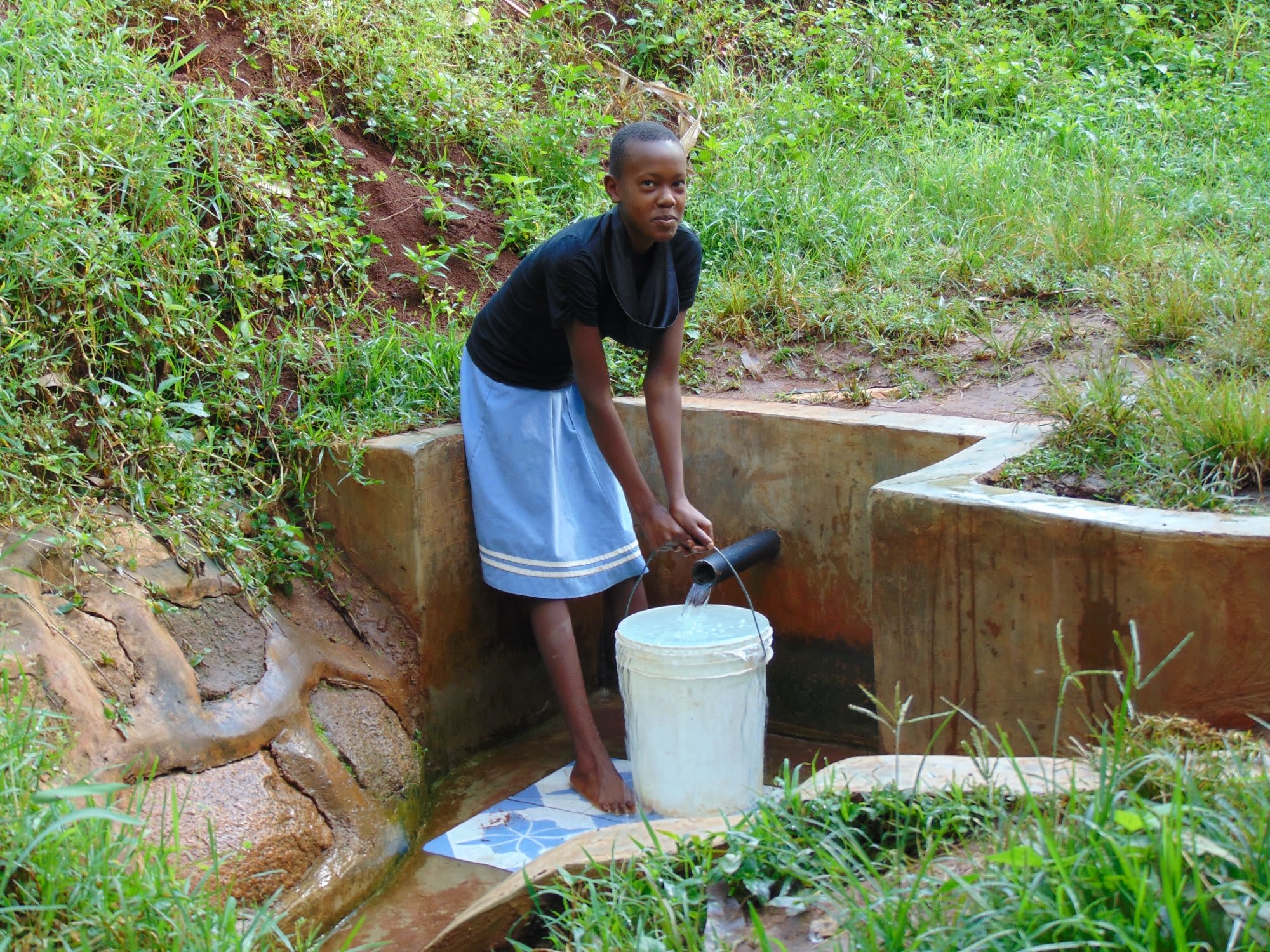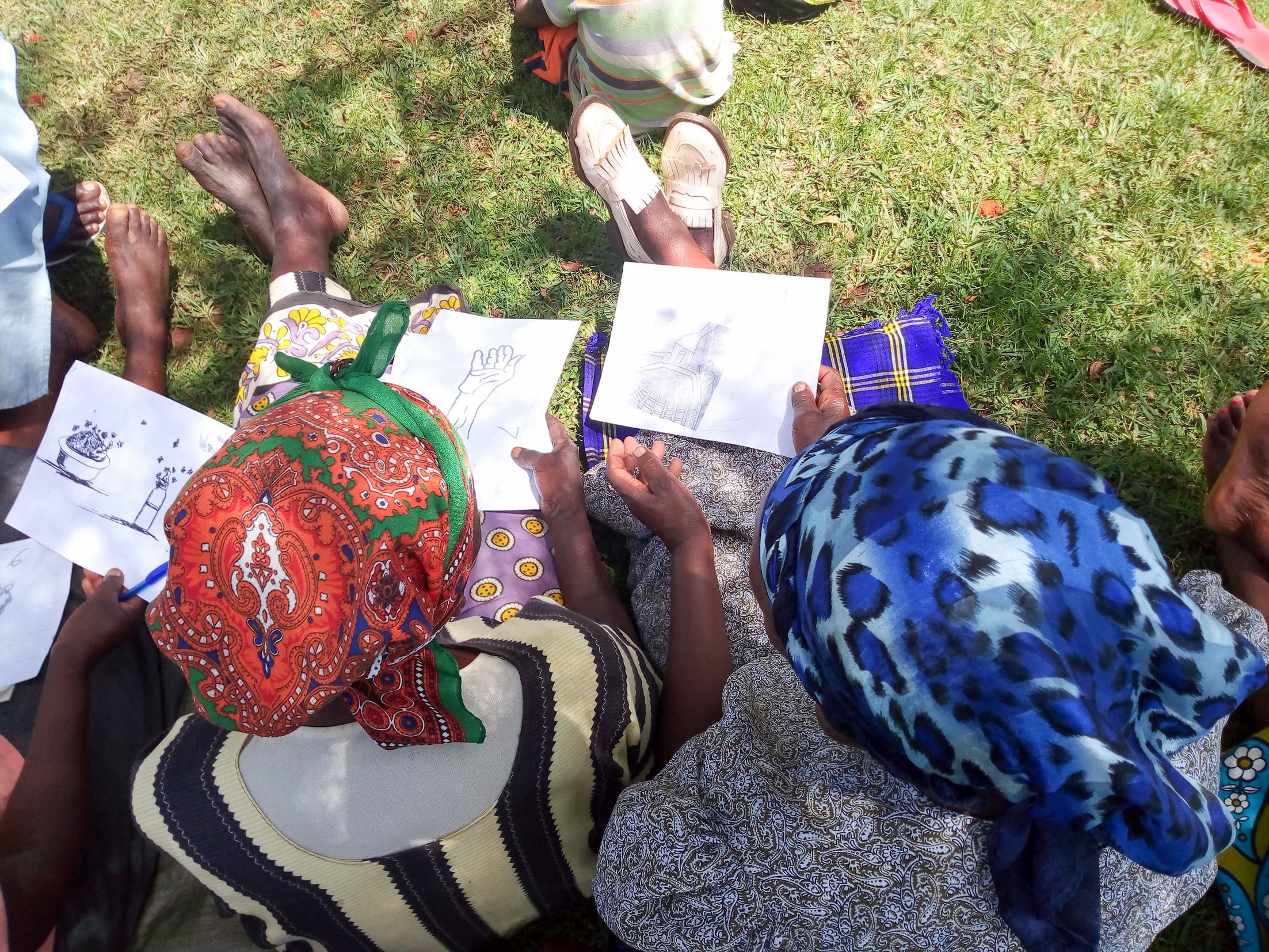Mwashi Spring is located in Musutsu Village of Vihiga County.
A normal day begins at about 6 in the morning. Children, together with their parents, wake up to prepare for the day's activities.
As the children go to school, the older members, who are mostly casual laborers in the nearby Shamakhokho Town, report to their duties as some remain behind to tend to their farms.
Members of the village practice small-scale farming, this being due to lack of sufficient land to carry out large-scale farming. They farm crops such as maize, beans, bananas, sweet potatoes, and also a few members in the village grow tea which is sold to the nearby Mudete Tea Factory.
Water
We were referred to the spring by the principal of Imusutsu Secondary School. We came to realize that some students and staff at school draw water from the spring.
We did find that the spring is a permanent water source which serves quite a large number of members. The spring mainly serves nearby households. The secondary school especially depends on it during the drought seasons.
We could see a member of the village immersing a jug in the pool of water then pour the water into a 10-liter jerrycan. A few minutes later, two boys come carrying 20-liter jerrycans, they immersed the jerrycans in water till full then carried them home.
The water fetched from the spring is used almost immediately. Unused water is stored in the jerrycans. When we inquired why we were told that the community has sufficient water which is available at all times so there is no need invest in storage containers for homes.
We could see that the water catchment area is left exposed, leaving it open to contaminants. During our visit, members were positive and willing to take part in its protection process since they knew the dangers it poses to them.
A shortage of safe drinking water leads to a widespread of water-related diseases that include cholera and typhoid.
"Last year we did have cases of Typhoid in our village an indicator that our water was not safe for use as it was exposed. Members of the village were infected but were able to get treatment. Thank God no one died," Mrs. Beatrice Musimbi said.
"Currently, we have not had anyone sick due to waterborne disease."
Mrs. Jane Ambani, a village resident recalled an incident where an old woman slipped and fractured her leg while approaching the spring to fetch water, due to a lack of stairs. She is now grateful that the spring will be protected and that there will be no injuries in the future.
Sanitation
More than 75 percent of households have latrines. Most of the toilets structures are thatched and the floors made of wood. A majority of the toilets are not well cleaned, as we could see during our visit. We were able to spot at least one form of sanitation facility at each home we visited. That includes simple pit latrines, clotheslines, and dish racks.
Mrs. Musimbi did tell us that a majority of the village members have small gardens where garbage is disposed and later used as manure.
Here’s what we’re going to do about it:
Training
Community members will attend hygiene and sanitation training for at least two days. This training will ensure participants have the knowledge they need about healthy practices and their importance. The facilitator plans to use PHAST (Participatory Hygiene and Sanitation Transformation), CLTS (Community-Led Total Sanitation), ABCD (Asset-Based Community Development), group discussions, handouts, and demonstrations at the spring. One of the most important topics we plan to cover is the handling, storage, and treatment of water. Having a clean water source will be extremely helpful, but it is useless if water gets contaminated by the time it’s consumed. Handwashing will also be a big topic.
Training will also result in the formation of a committee that will oversee operations and maintenance at the spring. They will enforce proper behavior around the spring and delegate tasks that will help preserve the site, such as building a fence and digging proper drainage. The fence will keep out destructive animals, and the drainage will keep the area’s mosquito population at a minimum.
Sanitation Platforms
On the final day of training, participants will select five families that should benefit from new latrine floors.
Training will also inform the community and selected families on what they need to contribute to make this project a success. They must mobilize locally available materials, such as bricks, clean sand, hardcore, and ballast. The five families chosen for sanitation platforms must prepare by sinking a pit for the sanitation platforms to be placed over. All community members must work together to make sure that accommodations and food are always provided for the work teams.
Spring Protection
Protecting the spring will ensure that the water is safe, adequate and secure. Construction will keep surface runoff and other contaminants out of the water. With the community’s high involvement in the process, there should be a good sense of responsibility and ownership for the new clean water source.
Fetching water is predominantly a female role, done by both women and young girls. Protecting the spring and offering training and support will, therefore, help empower the female members of the community by giving them more time and efforts to engage and invest in income-generating activities.
This project is a part of our shared program with Western Water And Sanitation Forum (WEWASAFO). Our team is pleased to provide the reports for this project (edited for readability) thanks to the hard work of our friends in Kenya.

 Protected Spring
Protected Spring
 Rehabilitation Project
Rehabilitation Project













